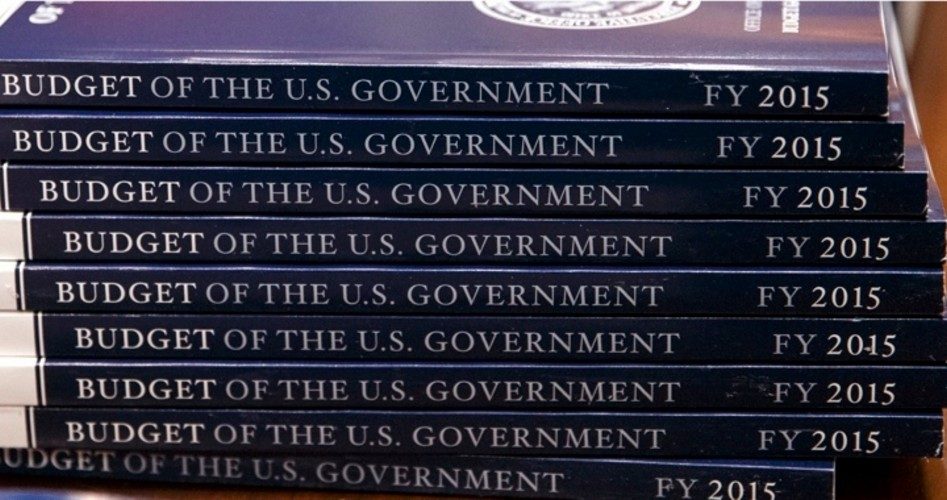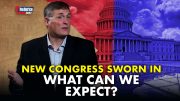
President Obama dropped his fiscal 2015 budget proposal on Congress March 4 to a chorus of yawns and indifference. The budget featured numerous massive new spending proposals — almost none of which are likely to become law — along with proposals for tax increases on “the rich” and fiscally unsustainable deficits through the rest of his presidential tenure.
Even establishment press organs received the budget proposals with a reaction along a spectrum from yawns to cynicism about its deployment as an election-year wedge. Zeke J. Miller of Time magazine noted that Obama’s budget was “designed to showcase the party’s focus on the middle class, while portraying GOP opponents as defenders of the wealthy.”
Obama’s ability to force legislation through Congress ended with the Tea Party revolution of 2010 and Republican control of the U.S. House of Representatives. But spending will continue to increase under the current budgeting process. Two-thirds of the federal budget is on fiscal auto-pilot as so-called “mandatory spending,” which includes Social Security, Medicare, most of ObamaCare, and most other welfare state entitlements.
The political odds of getting an agreement for cuts to pass the Democratic-controlled Senate, or increases to pass the Republican-controlled House of Representatives, is virtually zero.
Diminished Expectations
Obama’s budget message noted that “average wages have barely budged. Inequality has deepened. Upward mobility remains stalled. Even in the midst of recovery, too many Americans are working more than ever just to get by — let alone get ahead. And too many still are not working at all. Our job is to reverse these trends.”
But by his own yardstick, Obama’s presidency has become one of diminished expectations. When compared with his first budget proposal in May 2009 (for fiscal 2010), Obama’s 2015 budget proposal reflects lower expectations of economic growth. Obama’s budget also has gradually trimmed the pie-eyed projections of economic growth in his early budgets, when he predicted three straight years of more than four percent real GDP growth. But economic growth never measured up to the predictions. Real GDP growth averaged just 2.25 percent during the past four years, and never exceeded three percent (though Obama had predicted it would exceed three percent in each of the four years). The fiscal 2015 budget projects three percent or greater real GDP growth for every fiscal year 2014-17.
Even these diminished economic expectations may still be wildly optimistic. The U.S. economy hasn’t had more than two consecutive years of more than three percent real GDP growth since the late 1990s, a time when national savings rates were much higher and national debt was much lower. High national savings and low national government debt are the two most important components of strong national economic growth.
Though Obama continues to propose new spending programs and increased government, his budget also reflects the unwillingness of Congress to fund his pet spending projects. Total federal spending levels proposed for fiscal 2015 — though an obscenely large increase of 6.8 percent over 2014 — nevertheless represents about $400 billion less in spending increases than Obama wanted back in 2009. And the deficit would be about $250 billion lower than the $800 billion deficit he projected he’d ask Congress to pass five years ago for fiscal 2015.
Spending-increase Proposals
President Obama proposed the following new spending programs in his budget message to Congress:
My Administration has already launched four hubs for high-tech manufacturing, where we have connected businesses to research universities that can help America lead the world in advanced technologies. The Budget expands on these efforts by providing funding for five additional institutes, and, through the Opportunity, Growth, and Security Initiative, supports the goal I announced last summer of creating a national network of 45 of these manufacturing innovation institutes over the next 10 years.
And:
• “create jobs rebuilding our roads and bridges and unclogging our commutes and transporting goods made in America”;
• “promotes clean energy with investments in technologies like solar”; and
• “new efforts to drive greater performance and innovation in workforce training, including on-the-job training, apprenticeships, and other steps to equip workers with skills that match the needs of employers.”
Obama also promoted the idea of the federal government providing “education” to children as young as infants, telling reporters at a March 4 press conference at the Washington, D.C., Powell Elementary School:
We know, and this is part of the reason we are here today, that education has to start at the earliest possible ages. So this budget expands access to the kind of high quality pre-school and other learning programs to give all of our children the same kinds of opportunities that those wonderful children that we just saw here today are getting right here at Powell.
Of course, if federal officials assume the future success of America’s children depends upon a monetary gravy train from Washington, then the next generation of Americans is already doomed to ignorance and poverty. Obama’s early childhood spending program “will invest in new partnerships with States and communities across the country to expand access to high-quality early education, and I am again calling on the Congress to make high-quality preschool available to every four-year-old child. The Budget also includes funding to provide access to high-quality infant and toddler care for more than 100,000 children, and supports the extension and expansion of voluntary home visiting programs.”



